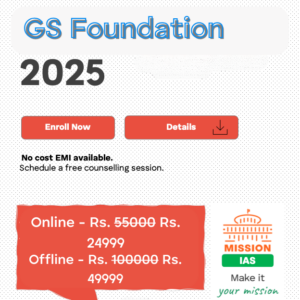In the annals of modern history, particularly during the late 19th and early 20th centuries, the Indian struggle for independence unfolded against the backdrop of a nuanced ideological divide between two prominent factions: the Moderates and the Extremists. This schism within the Indian National Congress reflected divergent approaches and strategies in pursuit of the common goal of liberating India from colonial rule. The Moderates, epitomized by leaders such as Gopal Krishna Gokhale and Dadabhai Naoroji, advocated for a gradual and constitutional approach, emphasizing dialogue and cooperation with the British authorities. In stark contrast, the Extremists, led by firebrands like Bal Gangadhar Tilak and Bipin Chandra Pal, sought more assertive methods, including civil disobedience and mass mobilization, to achieve swaraj or self-rule. This comparison between the Moderates and Extremists unveils a fascinating chapter in the tapestry of India’s struggle for independence, shedding light on the diverse strategies employed by these two factions during a crucial period in the nation’s history.
| Basis | Moderates | Extremists |
| Phase | 1885-1905 | 1905-1920 |
| Aim | 1. Aimed at administrative and constitutional reforms. 2. Wanted more Indians in the administration and not to end of British rule. 3. They were secular in their attitudes, though not always forthright enough to rise above their sectarian interests. They knew the exploitative nature of British rule but wanted its reforms and not expulsion. | 1. Aim of getting Swaraj 2. Wanted to end the tyrannical rule of the British. |
| Ideology | 1. They believe in the efficacy of peaceful and constitutional agitation. 2. They had great faith in the British sense of justice and fair play. 3. They were inspired by the ideas of Western philosophers like Mill, Burke, Spencer and Bentham. Moderates imbibed Western ideas of liberalism, democracy, equity and freedom. | 1. They were radical in their approach. The demands of extremists were aggressive. 2. They believed in Atma shakti or self-reliance as a weapon against domination. 3. Ideological inspiration was Indian History, Cultural heritage, national education and Hindu traditional symbols. Hence, they revived the Ganapati and Shivaji festivals to arouse the masses. 4. They wanted to inculcate pride in India’s glorious culture to generate the spirit of nationalism. They invoked goddesses Kali or Durga for strength to fight for the motherland. 5. Guided by four: principles Swarajya, Swadeshi, Boycott of foreign goods and National education to make the Indians aware. |
| Methodology | 1. They follow the principles of 3P: Petition, Prayer and Protest. 2. They believed in cooperation and reconciliation. | 1. They believe in militant methods. 2. They follow the principle of Atma shakti or self-reliance as a weapon against domination. 3. Method of Non-Cooperation. 4. They advocated democracy, constitutionalism and progress. |
| Leaders | A.O. Hume. W.C. Banerjee. Surendra Nath Banerjee, Dadabhai Naoroji, Feroze Shah Mehta. Gopalakrishna Gokhale. Pandit Madan Mohan Malaviya. Badruddin Tyabji. Justice Ranade and G.Subramanya Aiyar | Lala Lajpat Rai, Lokmanya Bal Gangadhar Tilak. Bipin Chandra Pal, Aurobindo Ghosem Rajnarayan Bose, and Ashwini Kumar Dutt |
| Social Support | Zamindars and Upper middle classes in towns | Educated middle and lower middle classes in towns |
| Contribution | 1. Economic Critique of British Imperialism 2. Constitutional Reforms and Propaganda in Legislature 3. Campaign for General Administrative Reforms 4. Defence of Civil Rights | The demand of Swaraj Mass movement Spread of national education Upliftment of downtrodden Nationalism Support to revolutionary movements Rise of communalism Encouraged co-operative organisation Set up charitable associations for rural sanitation, preventive police duties, regulation of fairs and pilgrim gatherings for providing relief funds during famines and other calamities. |
Frequently Asked Questions (FAQs)
Q1: What were the key differences between the Moderates and Extremists during the Indian independence movement?
Answer: The Moderates and Extremists were two factions within the Indian National Congress with differing ideologies and strategies. Moderates, led by leaders like Dadabhai Naoroji and Gopal Krishna Gokhale, believed in constitutional methods, dialogue, and gradual reforms to achieve self-rule. On the other hand, Extremists, led by figures like Bal Gangadhar Tilak and Bipin Chandra Pal, advocated for more radical approaches, including passive resistance, non-cooperation, and, in some cases, even revolutionary methods. The major distinction lay in their approaches towards attaining Indian self-governance.
Q2: How did the strategies of Moderates and Extremists evolve in response to British policies during the Indian independence movement?
Answer: Initially, Moderates adopted a conciliatory approach, seeking reforms and constitutional concessions from the British government. However, with the disappointment over the lack of significant progress, Extremists emerged, demanding more assertive actions. The Extremists criticized the Moderates for their perceived timidity and called for a more direct confrontation with the colonial authorities. Over time, as British policies hardened, the Extremists gained prominence, emphasizing mass participation and direct action as means to achieve political objectives.
Q3: What role did the split between Moderates and Extremists play in shaping the trajectory of the Indian independence movement?
Answer: The split between Moderates and Extremists in the Indian National Congress had a profound impact on the independence movement. While Moderates sought constitutional reforms and dialogue, the Extremists pushed for more radical measures. This ideological divergence led to a temporary weakening of the Congress as a united front. However, it also paved the way for a synthesis of approaches in the years that followed. The collaboration between Moderates and Extremists, especially during the pivotal Lucknow Session of 1916, marked a crucial phase where the Congress developed a unified strategy that combined constitutional methods with mass movements, ultimately contributing to the success of the independence movement.
In case you still have your doubts, contact us on 9811333901.
For UPSC Prelims Resources, Click here
For Daily Updates and Study Material:
Join our Telegram Channel – Edukemy for IAS
- 1. Learn through Videos – here
- 2. Be Exam Ready by Practicing Daily MCQs – here
- 3. Daily Newsletter – Get all your Current Affairs Covered – here
- 4. Mains Answer Writing Practice – here


